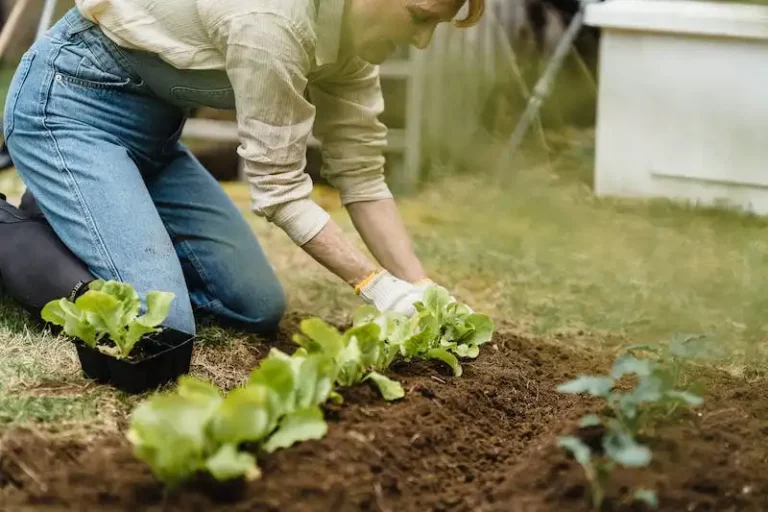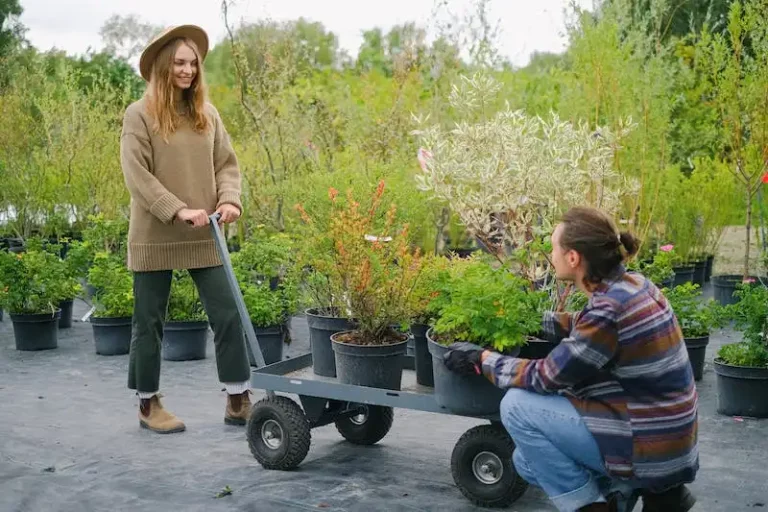Creating a garden border is an important step in designing a well-structured and visually appealing outdoor space. Whether you have a small flower bed or a large yard, adding borders can help define and separate different areas, creating a sense of organization.
One of the first things to consider when creating a garden border is choosing the perfect material. There are many options available, both natural and man-made, to suit your preference and budget. Common choices include bricks, stones, wood, and concrete. If you’re looking for a more natural and rustic look, materials like fieldstone or stacked stones can be a good choice. On the other hand, if you’re going for a more modern and polished appearance, concrete or steel borders can create a crisp, linear edge.
When installing a garden border, it’s important to properly prepare the area beforehand. Start by marking the desired border line using stakes and string. Then, remove any grass, weeds, or other vegetation from the area. Use a shovel or edging tool to create a trench along the marked line, about 12 inches deep. This will not only help define the border, but also prevent grass from growing into the flower beds.
Once the trench is prepared, you can start placing the chosen material into the trench. Ensure the material is well-aligned and level, making adjustments as needed. For added stability, consider using landscape adhesive or mortar to secure the border materials in place. Be sure to leave a small gap between the materials for drainage.
After the borders are in place, it’s time to fill the flower beds with soil or mulch. Mulch is a popular choice as it helps retain moisture, suppresses weeds, and adds an attractive contrast to the plants. Be sure to choose a mulch color that complements the plants and the overall landscape. If you prefer a more neutral look, consider using natural wood chips or gravel.
It’s important to note that garden borders require regular maintenance. Keep the edges clean and well-defined by removing any grass or weeds that may grow between the border and the lawn. Additionally, consider adding a 2-inch layer of mulch each year to prevent weed growth and to maintain a fresh appearance.
Creating a garden border is all about personal preference and creativity. Whether you’re going for a classic and timeless look or a more modern and artistic design, there are endless ideas to explore. Just remember to choose the right material, prepare the area properly, and maintain it regularly for a perfect garden border that will enhance the beauty of your outdoor space.
Landscape borders Eye-catching edging ideas to separate your garden areas
Creating a visually appealing garden border is a creative way to enhance the look of your outdoor space. Whether you choose to use paving stones, rocks, or even wattle, there are endless options to consider when it comes to edging your garden.
One rule to keep in mind when choosing your border materials is to think about how they will hold up over time. While some edging options may not be as durable as others, they can still add a unique touch to your garden.
If you haven’t quite nailed down your edging idea, why not try using rocks? Rocks can be arranged in various ways to create a visually stunning border. They are also great for growing moss and other low-maintenance plants, making them a perfect choice for those who don’t have much time for gardening.
Another option to consider is using steel edging. This smooth and neat border creates a linear edge, making it easy to mow around. Steel edging is also great for preventing mulch or soil from spilling onto your lawn or walkways.
For a more natural look, you may want to try using stones. Stones come in various colors and sizes, giving you the freedom to choose the perfect ones for your garden. They can be arranged in a random pattern or even stacked to create a larger border.
If you’re feeling particularly creative, you could use bricks for your garden border. Bricks can be laid in different patterns and provide an attractive contrast to the surrounding plants. You can also plant moss or other ground cover between the bricks to create a filled-in look.
It’s important to note that there are many other materials you can use for your border, such as gravel or even mulch. The key is to think outside the box and consider what will work best for your specific garden.
Before you start, it’s helpful to sketch out your border and label the steps you’ll need to take. This will give you a guide to follow and ensure your border turns out just the way you want it.
We hope you find these edging ideas helpful in creating the perfect garden border. With a little creativity and some careful planning, your garden can become a beautiful space that is both inviting and eye-catching.
Why add landscape edging to a garden
Adding landscape edging to your garden can be an important step in creating a well-organized and visually appealing outdoor space. It acts as a bible to keep your garden borders in check, ensuring that the plants stay in their designated areas.
The first reason why garden edging is so important is that it helps to keep your garden looking neat and tidy. By creating a clear divide between the garden and the grass or other areas, you can ensure that the plants don’t spill over into the wrong space and create a messy appearance.
There are many types of landscape edging materials that you can choose from, so you can get as creative and eye-catching as you want. Consider using rocks, concrete, or even paving stones to make your garden borders stand out.
Another important reason to add landscape edging is that it can help you plan and make use of the space efficiently. By creating clear borders, you can label and organize different areas of your garden, providing a full picture of the different types of plants you have planted.
One of the benefits of using garden edging is that it can also help with the maintenance of your garden. By creating a physical barrier between the garden and the grass or other areas, you can keep the grass from growing into the garden space, making it easier to mow and maintain the garden.
If you’ve ever wanted to re-create the beautiful and enriching landscape that you see in magazines or online, adding landscape edging is one way to achieve that. By using different types of edging materials, you can create crisp and neat lines that are filled with color and inspiration.
When choosing edging materials, think about the practicality as well. There are liners and materials that provide helpful contrast, allowing your garden to stand out and catch the eye. Some options include wattle, concrete, or even stones.
Adding edging to your garden borders can bring a sense of order and structure to your outdoor space. It can also create a visually appealing and interesting space that stands out from the rest of your yard. So, if you’re curious about adding landscape edging to your garden, bring out your shovel and get to work!
Choosing materials for garden borders
When it comes to creating a garden border, choosing the right materials is crucial for a successful landscape. The materials you choose will not only add aesthetic appeal to your garden, but they will also play a significant role in defining the shape and structure of your garden beds.
There are several important steps to follow when choosing materials for your garden border. First, consider the overall theme or color scheme of your garden. Keep in mind the winter landscape as well, as some materials may lose their color or benefits during colder months.
One popular choice for garden borders are stones, which can be stacked or arranged in various ways to create a unique and eye-catching border. Stones can be made of different materials, such as white limestone or dark granite, each adding its own sense of texture and contrast to the garden. However, keep in mind that digging and arranging stones can be hard work, so be prepared for a bit of a workout.
An alternative option for garden borders is paved materials, such as bricks or concrete. These materials often require less maintenance and can be a cost-effective choice. Additionally, bricks or concrete pavers can be arranged in different patterns, adding a sense of creativity to your garden border.
If you’re looking for a more natural and rustic look, consider using wood materials for your garden border. For example, a wattle fence made of woven willow branches can provide a charming and whimsical touch to your garden. Wood materials can also be used to create raised beds or planters, giving your garden a layered effect.
Another important aspect to consider is the height of your garden border. Depending on what you’re planting in your beds, you may need taller or shorter materials. It’s always helpful to have a rule of thumb, such as keeping the materials at least 12 inches above ground level, to ensure that your plants have enough space to grow and thrive.
Finally, don’t forget to add mulch in your garden beds. Mulch not only helps to retain moisture in the soil, but it also adds a crisp and clean appearance to your garden. There are different types of mulch available, such as wood chips or straw, so choose the one that suits your garden best.
By keeping these tips in mind and following a well-planned scheme, you can create a beautiful and visually appealing garden border that will add a touch of personality and charm to your outdoor space.
Digging a space for your edging material
Creating a garden border involves digging a space for your chosen edging material. This step is an essential part of the process, as it helps define the boundary between your garden and the surrounding areas.
Before you start digging, take some time to plan where exactly you want your garden border to be. Consider the layout of your yard and the specific areas you want to separate. You can mark the edges with plastic or use garden stakes to make sure you create a straight line.
Now, it’s time to grab your shovel and start digging! Make sure the area is free from any grass or other plant material. If there are existing paving or mulch, you may need to remove them. The depth of the trench will depend on the size of your edging material. A general recommendation is to dig at least four inches deep for most edging materials.
If you’re using steel or plastic edging, it’s helpful to insert it into the trench as you dig. This will help ensure a straight and neat edge. Use a rubber mallet or a hammer to gently tap the edging into the ground, keeping it level with the surrounding landscape.
For a more natural look, you can choose fieldstone or other natural materials. Dig a trench slightly wider than the stones and place them in the desired pattern. Fill in the gaps between the stones with soil to secure them in place.
When digging your trench, it’s important to consider the color and texture of your edging material. Think about how it will contrast or blend with the rest of your garden. Some gardeners recommend choosing edging materials that will create an eye-catching border, while others prefer a more understated design.
Taking the time to dig a proper space for your edging material will not only help define your garden borders but also provide a clean and organized look to your outdoor space. Now that you know how to dig a space for your edging material, you can start choosing the perfect material for your garden border!



